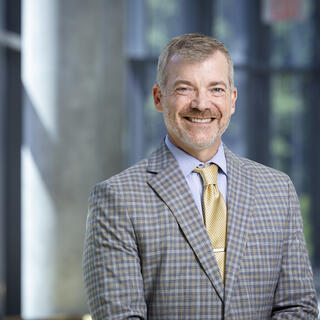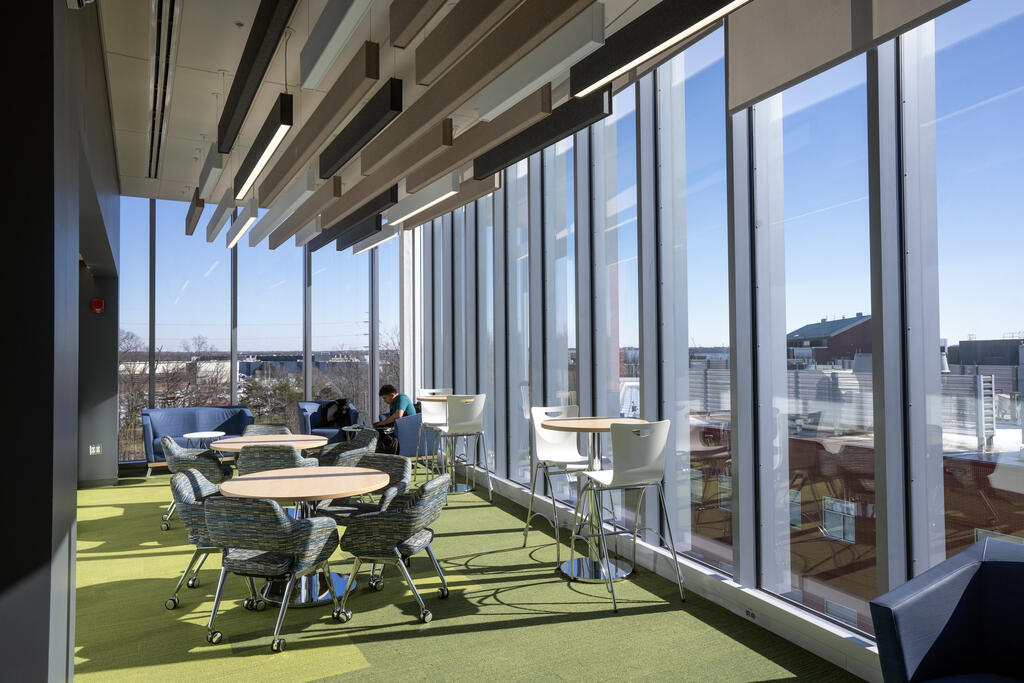Admission CTAs
Dean's Blog: It’s time for spring

It's happened since 1887. Each February 2, in a small town in Pennsylvania, people gather and watch to see if a small furry groundhog comes out from hibernation and sees its shadow. If it sees its shadow, legend decrees we are in for six more weeks of winter. Alternatively, if the creature does not see his shadow and stays outside, it is time for spring to begin. In effect, perhaps the creature is just reacting according to the natural environment.
I'd have to ask our meteorological experts if Phil is truly a bright prognosticator yet, according to NOAA, Phil has seen his shadow 107 times, forecasted an early spring 20 times, and was correct in predicting the long 2014 winter, and early spring in 2016 and 2020. Regardless, let's look beyond the tradition of this activity and ask ourselves conceptually, when the light is brightest on each of us, do we turn and run back in our burrow or do we stay and bask in the sun's warmth? Are we ready for whatever the new season will bring or do we want to curl up and take another long nap?
There are days when I bet we feel both courses of action are the right solution. And that's OK.
The College of Science has a busy spring planned. On the academic side, our spring credit hours have grown since the prior year, and we welcome the new transfer students joining our scientific community. We again have seen an increase in applications to join our ranks in the fall and are providing countless ways for aspiring scientists to explore our many scientific disciplines. And we continue to collaborate with partners to pursue consequential and timely research, across dozens of scientific domains.
For example, in a recent publication in Nature Sustainability, George Mason doctoral student in human factors and applied cognition, Irene Feng, collaborated with Department of Atmospheric, Oceanic and Earth Sciences associate professor, Daniel Tong and others to assess the economic costs of wind erosion in the United States. The high-level summary: researchers estimate that wind erosion and dust in the United States costs quadrupled the previous assessment including many costs associated with wind erosion that were not accounted for and while conservative, the estimate reveals that the economic burden of wind erosion is substantial and investment in dust mitigation could yield large economic benefits.
Many of our scientists also leverage the power of artificial intelligence (AI) and machine learning in the US and globally. Both Department of Mathematical Sciences professor, Harbir Antil, and Department of Biology associate professor, David Luther, have recently demonstrated creative scientific uses of AI: Antil’s Center for Mathematical Artificial Intelligence explores mathematical opportunities in digital twins (DTs) research. He brings together global coalitions and recently provided a briefing on Capitol Hill, discussing the need for DTs in various applications, including infrastructure, biomedicine, bioengineering, and the energy sector. Luther, associate professor in the Department of Biology spent time at the college’s Brazilian outpost to use AI to track species biodiversity in the Amazonian rainforests.
Clearly, these scientists are actively engaged this spring yet, for those resonating more with the other scenario of returning to the burrow, we also offer many resources for you or ways you can help others as spring begins. George Mason’s Stearns Center for Teaching and Learning offers support and training for faculty on ways to support student learning. There are many George Mason Employee Assistance Programs as well as meditation moments with the Center for the Advancement of Wellbeing (CAWB) to calm and energize yourself or a colleague. Or, if you seek to help others in need, perhaps you might consider sharing information or donating to assist those on our campus that are food insecure through the Patriot Pantry.
Although Phil the groundhog predicted more winter, our scientific spring has sprung. We are actively engaged and I am continually amazed at the incredible accomplishments our scientists bring forward. Please always know our community will face both the cold and warm days ahead, together.
